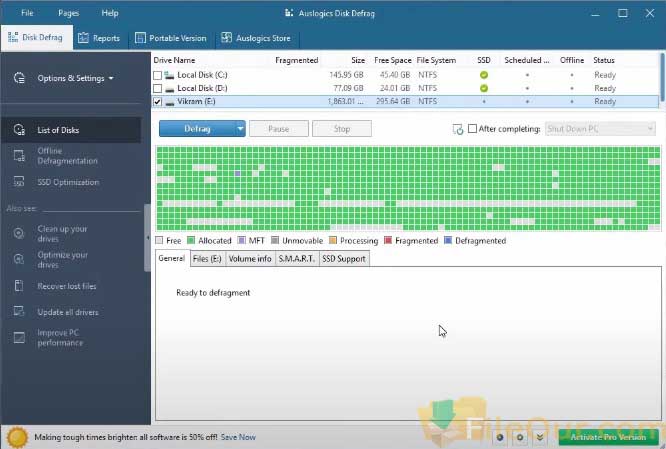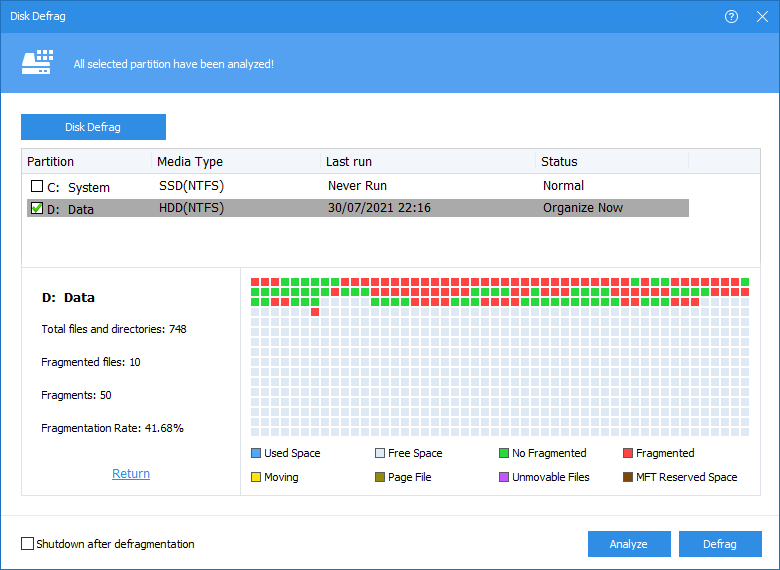

- BEST FREE DISK DEFRAG FOR VIDEO LAG FULL
- BEST FREE DISK DEFRAG FOR VIDEO LAG WINDOWS 10
- BEST FREE DISK DEFRAG FOR VIDEO LAG SOFTWARE
- BEST FREE DISK DEFRAG FOR VIDEO LAG DOWNLOAD
The 25% Rule of Thumb for SSDs Is Probably Too Conservative However, this just applies to mechanical hard drives that need defragmentation, and not the solid-state drives generally found in more modern PCs.

Windows will only partially defragment the drive, and it will grow increasingly fragmented over time. If you don’t have 15% free space, Windows won’t be able to properly defragment the drive. RELATED: Do I Really Need to Defrag My PC? That’s because, traditionally, you needed at least 15% free space on a drive so Windows could defragment it. You’ll commonly see a recommendation that you should leave 15% to 20% of a drive empty. The 15% Rule of Thumb for Mechanical Hard Drives There are a few rules of thumb going around online, but they aren’t necessarily applicable today. Microsoft does not disclose a specific amount of free space you should keep. However, there’s no firm percentage or number of gigabytes of free space you need to maintain.
BEST FREE DISK DEFRAG FOR VIDEO LAG FULL
These tools can’t function without some free space, and other programs may also break for no apparent reason unless you realize your system drive is full and free up some space. Windows provides no further detail, but freeing up space allowed the troubleshooters to start.
BEST FREE DISK DEFRAG FOR VIDEO LAG WINDOWS 10
RELATED: 7 Ways To Free Up Hard Disk Space On Windowsįor example, when we filled a Windows 10 PC’s drive completely full and attempted to run its included troubleshooters, we just saw a message saying “A problem is preventing the troubleshooter from starting”. If you open a large number of programs and need extra memory, the Windows paging file will need to grow-but it won’t be able to grow and programs may crash or not open. Programs often need to create cache files, so they may crash or experience other errors.
BEST FREE DISK DEFRAG FOR VIDEO LAG DOWNLOAD
If your drive fills up, you won’t be able to save new files to the drive or download anything, including Windows Updates. It can also lead to irreversible damage such as loss of data because of not saving on time, failing to download an important file, inefficiency, high-performance costs, and more.You need some available space for a variety of reasons.

BEST FREE DISK DEFRAG FOR VIDEO LAG SOFTWARE
The software is available for free, and no additional plugins, third-party apps, or add-ons are needed to download Auslogic’s Disk Defrag.Ī screen that keeps freezing or files that take too long to open or save can be annoying. It takes up to 50MB of disk space and 32MB of RAM. Minimal Space and FreeĪuslogics Disk Defrag requires very little space and doesn’t strain the system’s resources. Such remedies and time can be redirected to other tasks. Auslogic’s Disk Defrag Free can be automated, relieving you of the need to do it physically.īesides scheduling disk optimization tasks, it frees up time and resources that would have been used to undertake the activity. Say goodbye to batch file processors, frequent errors, or temperamental scripts. The software can be used on several drives, including flash memory, allowing defragmentation to take place simultaneously. For instance, a user has the option of either defragmenting an entire folder or a single file. The software is flexible and can easily be configured to match the needs at hand. It takes only a few minutes to download Auslogic’s Disk Defrag. However, it comes fully loaded with extra features that include disk optimization, temporary file removal, and more. Unlike other defragmenters in the market, this version is much easier to navigate, understand, and also customize. A user doesn’t have to be a tech guru to defragment the disk. Ease of useĭisk Defrag comes with a friendly interface, easy to use. Standout Features of Auslogics Disk Defrag 1. It is available as a free or premium product. The software is intended to consolidate free space, defragment folders and files on the hard drive, and optimize the placement of data.


 0 kommentar(er)
0 kommentar(er)
